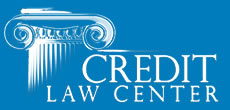Debt Begins To Skyrocket
Generation Z faces a mounting problem: credit card delinquencies are on the rise, fueled by maxed-out cards and financial inexperience. Born into a digital world of instant gratification, many young adults find themselves overspending, relying on credit to bridge the gap between income and expenses.
This trend is exacerbated by a lack of financial literacy. Despite their digital fluency, many Gen Z individuals struggle to understand the basics of personal finance, leaving them vulnerable to the pitfalls of revolving credit.
How Is This Happening?
The popularity of buy now, pay later services further complicates matters, tempting users with deferred payments while obscuring the true cost. The consequences are significant: damaged credit scores, limited financial opportunities, and systemic risk for the economy.
To address this issue, education is key. By providing young adults with the knowledge and skills to make informed financial decisions, we can empower them to navigate credit responsibly. Additionally, policymakers and financial institutions must collaborate to ensure that credit remains accessible without fostering overindebtedness.
How Can We Come Back?
For Generation Z individuals grappling with credit card debt, there are several steps they can take to bounce back:
- Face the Reality: The first step is acknowledging the situation and understanding the full extent of the debt. This means reviewing credit card statements, assessing outstanding balances, and understanding interest rates and fees.
- Create a Budget: Developing a budget is crucial for regaining financial control. Gen Z individuals should track their income and expenses to identify areas where they can cut back and allocate more funds towards debt repayment.
- Prioritize Repayment: Focus on paying off high-interest debt first while making at least minimum payments on other accounts. Consider strategies like the debt snowball or debt avalanche method to tackle debts systematically.
- Negotiate with Creditors: It’s worth reaching out to creditors to negotiate lower interest rates or more manageable repayment terms. Many creditors are willing to work with individuals facing financial hardship to find a mutually beneficial solution.
- Explore Consolidation Options: Consolidating multiple debts into a single loan with a lower interest rate can make repayment more manageable. However, it’s essential to carefully weigh the pros and cons of consolidation and ensure that it’s the right choice for your financial situation.
- Seek Financial Education: Investing time in learning about personal finance can pay dividends in the long run. Gen Z individuals can take advantage of online resources, workshops, or financial literacy programs to improve their understanding of budgeting, saving, and credit management.
- Build Healthy Financial Habits: Once out of debt, it’s crucial to maintain good financial habits to prevent falling back into the same situation. This includes living within one’s means, avoiding unnecessary debt, and prioritizing savings for emergencies and future goals.
- Consider Credit Counseling: If debt feels overwhelming or unmanageable, seeking assistance from a reputable credit counseling agency can provide valuable guidance and support. Credit counselors can help create a personalized debt repayment plan and offer strategies for long-term financial stability.
By taking proactive steps to address credit card debt and implementing sound financial practices, Generation Z individuals can bounce back from financial setbacks and lay the foundation for a more secure financial future.

